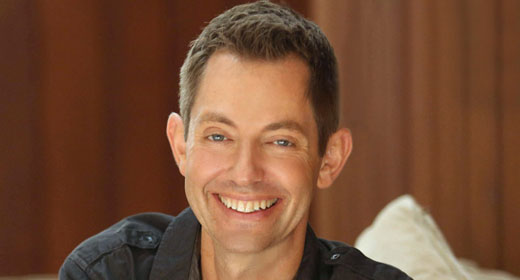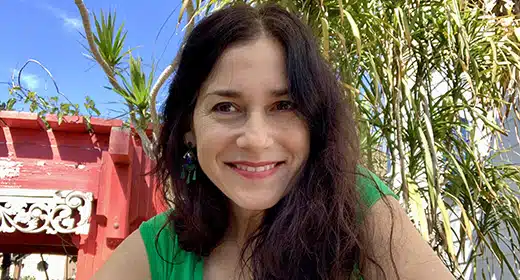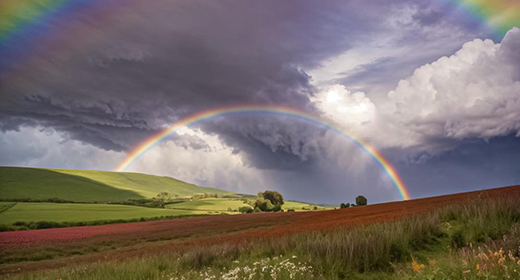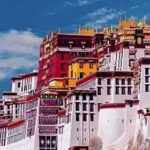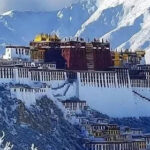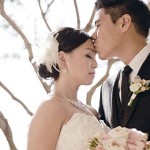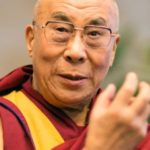by the Theosophy Trust: Meditation had been a vital dimension of Buddhist practice from the moment it entered China.  Tao-an combined a vigorous attempt to secure and meticulously translate accurate texts with an enduring commitment to establish strong foundations for the Buddhist sangha and by spreading meditation exercises amongst the monks. Although serene contemplation was honoured by Confucian scholars and a few Taoists revered some kinds of meditative art, Tao-an and his worthy successors introduced a more consistent and serious range of practices, based on a variety of sacred texts, to the Chinese mind. Yet, although meditation, dhyana, was held to be important, its cultivation was sporadic and uneven, since no school of thought made it the cornerstone of life. Nonetheless, individuals did just that, and gradually China became ripe for a fundamental reorientation of Buddhist thought. Bodhidharma recognized the fertile soil and sowed the seeds of dhyana in it. His successors reaped a fruitful harvest in the cluster of schools gathered together under the name of Ch’an.
Tao-an combined a vigorous attempt to secure and meticulously translate accurate texts with an enduring commitment to establish strong foundations for the Buddhist sangha and by spreading meditation exercises amongst the monks. Although serene contemplation was honoured by Confucian scholars and a few Taoists revered some kinds of meditative art, Tao-an and his worthy successors introduced a more consistent and serious range of practices, based on a variety of sacred texts, to the Chinese mind. Yet, although meditation, dhyana, was held to be important, its cultivation was sporadic and uneven, since no school of thought made it the cornerstone of life. Nonetheless, individuals did just that, and gradually China became ripe for a fundamental reorientation of Buddhist thought. Bodhidharma recognized the fertile soil and sowed the seeds of dhyana in it. His successors reaped a fruitful harvest in the cluster of schools gathered together under the name of Ch’an.
Very little is known of Bodhidharma‘s life, in part because few details survive from his time and in part because of the legends which surround him. Having little faith in the capacity of the written text to convey the quintessence of buddhavachana, the Word of Buddha, he did not commit much to writing. As the Ch’an tradition emerged, later writers relied on whatever sources they could find to reconstruct his life. Since he was altogether a mysterious being, these accounts attempted to capture the remarkable spirit of his actions rather than the details which might be found in a clinical biography.
Tradition holds that he was the third son of a South Indian Brahmin of Kanchipuram. His brilliance and exceptional powers of observation convinced him early in life that the ways of the world held nothing worth gaining, and so he became a monk. By the time he had mastered meditation, he saw that Buddhist practice was declining in many regions and he decided to go to China, where, he believed, a fresh infusion of dhyana could quicken Buddhist life. According to tradition, he arrived in China in about 520 C.E., although indirect evidence suggests that he might have reached northern China as much as forty years before. There he trained disciples and launched the Ch’an movement. Ch’an is an abbreviated form of ch’an-na, the Chinese equivalent to dhyana in Sanskrit, jhana in Pali, and later, zen in Japanese.
According to the records of the Ch’an and Zen schools of China and Japan, there existed from the time of Buddha a transmission outside the canonical Teaching. From the Ch’an standpoint there is a double gap between the luminous mind of Buddha and the written scripture. What is said in a certain context to particular individuals with a specific timing can only be imperfectly put down in written form. What could have been transparent to those who heard it from Buddha’s lips may become obscured by the opacity of written texts, and whole schools of interpretation may have arisen like shadows cast when sunlight falls on dense objects. Even more difficult than the inherent limitations of writing, however, is the gap between the inmost thoughts of an enlightened consciousness and the constricting words which have to be used to express them. An enlightened being abides within a pristine spiritual ontology and a pellucid meta-ethics, and his words can at best provide indicators of the realm of Reality. Metaphysically, consciousness abiding beyond the world of illusion characterized by limited space and measurable time can speak only in hints and guesses to consciousness bound by that world. Psychologically, the human mind can assimilate Buddha-consciousness only by rising to the level of Buddha. When this occurs in whatever degree, there is a direct contact between minds, a transmission outside the Teaching (though not in conflict with it), which in the world of words and passing thoughts can be represented only by Silence.
The Ch’an tradition traces itself to a single event in Buddha’s life. Once while discoursing to a gathering on Vulture’s Peak, Buddha left off all words. Silently he raised a flower given him by a lay disciple and gazed at it. None understood the import of this Teaching save the aged Mahakashyapa, who merely smiled. Seeing his smile, Buddha said, “I have the supremely precious treasure, spiritual and transcendental, which I now hand to you, O Mahakashyapa.” In this way, Mahakashyapa became the second Indian patriarch of the transmission outside the Teaching. From that time on, each patriarch was confirmed by his predecessor, often with some tangible symbol like a robe or a begging bowl, but always with a direct transmission from mind to mind of the secret of Enlightenment. This transmission from patriarch to successor was seen as a reflection, within a period marked by the advent of a Buddha, of the transmission of spiritual insight from Buddha to Buddha. In time, a gatha or verse was recorded as the legacy of transmission between Buddhas and from patriarch to patriarch. For example, the gatha of Buddha Kashyapa, offered to Siddhartha Gautama, reads:
Pure, immaculate, is the nature of all sentient beings;
From the beginning there is neither birth nor death.
Body and mind are phantom creations,
And phantom change holds neither sin nor merit.
When Gautama Buddha gave the transmission to Mahakashyapa, he said:
The Dharma is ultimately a dharma which is adharma;
A dharma which is adharma is also a dharma.
Now I hand this adharma on to you:
What is called the Dharma – where, after all, is it?
Within the Ch’an tradition, twenty-eight Indian patriarchs were recognized – “a special transmission outside the scriptures” – of whom Buddha was the first, followed by Mahakashyapa. Ananda, who had remembered everything Buddha said in his presence and whose recollections formed the basis for the scriptures set down at the First Council, was the third patriarch. Ashvaghosha, who wrote The Awakening of Faith in the Mahayana, was the twelfth, and Nagarjuna, whose searing dialectic illustrated the inherent limitations of language and systems, was the fourteenth patriarch. Vasubandhu, whose incisive treatises gave rise to various ‘mind-only’ schools, was the twenty-first patriarch, and Bodhidharma was the twenty-eighth. In choosing to go to China, Bodhidharma brought the Indian line to a close. Becoming the first Ch’an patriarch, he inaugurated a line which is generally held to have closed with the sixth Ch’an patriarch, and Bodhidharma’s begging bowl was buried with him. The sixth patriarch belonged to the Southern Ch’an school, which split with the Northern school, and after his time various lineages developed and faded into history.
Bodhidharma arrived in Canton around 520. In China he was known as P’u-t’i-ta-mo (usually shortened to Ta-mo), and in Japan, where his influence remains strong in the Zen schools, as Bodai-Daruma. His first recorded act in China was an interview with the famous Emperor Wu of Liang, a strong supporter of the Buddhist Order in his kingdom. Having shown Bodhidharma the temples he had built, the sacred texts he had transcribed and the large number of monks and nuns he had supported, he enquired, “What do you think my merit might be?”
“None whatever, sire”, was Bodhidharma’s blunt answer.
“But why?” the surprised emperor asked.
“All these are inferior deeds which cause their author to be born in the heavens or on this earth again. They still show the traces of worldliness, like shadows following objects. . . . As to a truly meritorious deed, it is replete with pure wisdom and is perfect and mysterious; its real nature transcends human understanding. It cannot be sought after by any worldly achievement.”
Realizing that he was hearing a radical reformulation of Buddhist thought, the emperor asked, “What is the first principle of the holy teaching?”
“Vast emptiness,” Bodhidharma replied, “and there is naught in it to be called holy, sire.”
“Who is it, then, who is now confronting me?”
“I know not, sire.
Although the emperor was gracious, he did not pretend to grasp Bodhidharma’s meaning, and the monk decided to travel north. Crossing the Yangtze River, he went to the northern kingdom of Wei, where he admired the great Yung-ning Temple in Lo-yang, calling it the finest temple he had ever seen. He did not seek to become a public figure, but he gathered a select group of disciples together and ordained at least one monk. Although he taught and wrote a few short texts, he focussed entirely on conveying a rigorous mode of meditation.
From the scanty materials that survive, including several brief treatises, it appears that Bodhidharma was less concerned to teach a system of meditation than to provide a method whereby all forms of meditation could be understood, assessed and strengthened. It is said that in Wei he retired to the Shao-lin Monastery and meditated facing a wall for nine years. Although some monks have taken this story literally and in some Zen schools meditation is conducted facing a wall, the story seems to refer to the method of meditation he taught, which he called pi-kuan, meaning ‘with mind perceiving (kuan) as a wall (pi) sees’, not ‘perceiving (kuan) a wall (pi)’. Bodhidharma was deeply moved by the vigorous, unstinting and ceaseless efforts of two of his disciples, Tao-yih and Hui-k’e. Because of their potent spiritual resolve, he penned one or two short essays on the meditative life for their benefit. His Meditation on Fourfold Practice provided the general method by which meditation was to be undertaken.
Although there are numerous ways to enter the Path, Bodhidharma wrote, they can be placed under two broad headings: entrance by reason and entrance by conduct. Entrance by reason means “the realization of the spirit of Buddhist teaching by the aid of scriptures”. Here one deepens one’s faith in the true and original nature, which is the same for all beings. This pristine nature is obscured by external objects and deluded thoughts, but when the mind turns from the false to the true, simply abiding in pi-kuan – meditation like a wall – both the separative sense of self and its cognate sense of otherness disappear. Such a mind is in communion with the formless essence of all beings. Its mode is silence and its condition is serene. Whatever details of life are encountered, it can be said to be not acting.
Entrance by conduct deals with the four acts under which all actions are subsumed.
What are the four? How to requite hatred; to be obedient to karma; not to seek after anything; to be in accord with the Dharma.
Requiting hatred has to do not only with overcoming dislikes and aversions but also with the sense of injustice that can arise when one is striving to do one’s spiritual best, only to find all kinds of adversity placed in the way. Bodhidharma suggested a specific line of thought which should be cultivated whenever such conditions affect one’s thoughts:
During innumerable ages in the past I have wandered through a multiplicity of existences, all the while giving myself to unimportant details of life at the expense of essentials and thereby creating infinite occasions for hate, ill will and wrongdoing. Even if no violations have been committed in this life, the fruits of evil deeds in the past are to be gathered now. Neither gods nor men can foretell what is coming upon me. I will submit myself willingly and patiently to all the ills that befall me, and I will never moan or complain.
Hatred is requited and not just banished by this method, because reflection on wrongful thinking becomes an opportunity to take a broad view of the chain of causation in the service of treading the Path.
Being obedient to karma involves recognizing that no self (atman) can be a part of whatever is the interplay of conditions resulting from karma. The oscillation between opposites like pain and pleasure is the outcome of previous actions, and both will in time disappear. “The spirit itself knows neither increase nor decrease”, and nothing can affect it if it is in harmony with the Path. Although the worldly-minded are ever attached to one or another thing, the wise know that all attachments, however noble or base, inevitably lead to suffering.
Their minds abide serenely in the uncreated while the body turns about in accordance with the laws of causation. All things are empty and there is nothing desirable and to be sought after. . . . Wherever there is seeking, there you have suffering; when seeking ceases you are blessed.
Being in accord with the Dharma means that the mind abides in purified reason, which is the Dharma. Further, Dharma is shunyata, the Void at the core of all manifestation, beyond attachments and pollution, where there is neither self nor other. When this state is realized, one’s conduct is in accord with the Dharma. Wise beings know this and have no attachments, and so their lives are embodiments of dana, selfless love and charity. They have no compulsion to be amongst human beings but voluntarily choose to work in the world.
Only because of their will to cleanse all beings of their stains, they come among them as of them, but they are not attached to the form. This is known as the inner aspect of their life. . . . The wise practise the six virtues (paramitas) of perfection to rid themselves of confused thoughts, and yet they are not conscious of their doings.
In this treatise Bodhidharma did not delineate a particular system of meditation, but he did set forth criteria of meditation and right practice, which involved an abiding faith that all beings share the same ultimate nature – a state of consciousness which is like a wall, witnessing all, clinging to nothing – and a constant mindfulness of the fourfold practices essential to spiritual nurture in daily life. In distinguishing between the two entrances – by reason and by conduct – he followed closely the teaching of the Vajrasamadhi Sutra, but there the term for steady, enlightened consciousness is chueh-kuan, ‘awakened perceiving’. By choosing the seemingly unsuitable phrase pi-kuan, ‘wall perceiving’, he drew attention to the critical element in all meditation practice: absolutely steady, non-dualistic, abiding consciousness. Tao-yuan, in his Records of the Transmission of the Lamp, written in 1004, quoted from an older work which discussed Bodhidharma’s pi-kuan doctrine. When Bodhidharma was teaching Hui-k’e in the Shao-lin Monastery, he said:
Externally keep yourself away from all relationships, and internally avoid ch’-uan, pantings, hankerings, in your heart. When your mind is like a straight-standing wall, you may enter the Path.
Although Bodhidharma spoke from direct experience, confirmed by his teacher and predecessor, he invoked sacred texts to explain the message he sought to pass on to others. A manuscript found in the Tun-huang Caves purports to be a discourse of Bodhidharma to an unknown disciple. There true mind is called wu-hsin, which has been translated ‘no-mind’. ‘Wu’ means ‘no’, but ‘hsin’ has many meanings, including ‘mind’, ‘heart’, ‘soul’, ‘regulating principle’, ‘consciousness’, ‘mental attitude’ and even ‘voluntariness’. In the Tun-huang discourse Bodhidharma argued that no thought, feeling or action would be possible without the invisible presence of wu-hsin in and behind it. Any conditioned conception, which includes every conception the conscious mind can think, is false when contrasted with Reality. “It is like a man seeing in the dark a table or a piece of rope which he takes for a ghost or a snake, being terrified by his own imagination.” Hence even one’s conceptions of nirvana and Enlightenment are illusory, just as are one’s conceptions of objects, beings and states. This is why, according to Bodhidharma, the Vimalakirti Nirdesha Sutra said that there is no body in which Enlightenment can be realized, and the Vajrachchedika Sutra taught that a Buddha’s attainment is no attainment. Yet wu-hsin is attainable because it is always present in consciousness.
Wu-hsin works through my conscious mind, making it understand the true nature of Reality. . . . So we read in the Ratnakuta that the mind functions by means of wu-hsin without being aware of it. . . . Only let us be awakened to wu-hsin in all things and in all our doings – this is the way of discipline, and there is no other way. Thus when wu-hsin is realized, all things cease to trouble us.
Having laid the foundations for his method, Bodhidharma spent most of his time in China bringing the method to life for disciples who were ready. The techniques he used, each appropriate to a particular disciple at a particular time, provided the colourful and seemingly bizarre behaviour which became the distinguishing mark of Ch’an and Zen life. Once a monk named Shen-kuang sought Bodhidharma’s help, but the patriarch ignored him. Shen-kuang persisted by remaining near Bodhidharma until he would be noticed. One evening he stood so long in falling snow that the drift about him reached almost to his knees. Suddenly Bodhidharma turned to him and said that the doctrine was incomparably difficult to master and the discipline even more difficult to endure. He added that only those of the highest virtue and wisdom would ever understand it. Shen-kuang continued to follow Bodhidharma, until one day Bodhidharma said, “This is not to be sought through another.”
“But my soul is not yet pacified”, Shen-kuang replied. “Pray, Master, pacify it.”
“Bring your soul here,” Bodhidharma said, “and I will have it pacified.”
After some hesitation Shen-kuang responded, “I have sought it these many years and am unable still to get hold of it.”
“There!” Bodhidharma exclaimed, “it is pacified once for all.”
Upon hearing these words, Shen-kuang realized that for which he had spent years in seemingly fruitless preparation. Bodhidharma, knowing his mind, knew with exact timing precisely what to say, and Shen-kuang gained insight into the true nature of all beings. Thereupon Bodhidharma told him to change his name to Hui-k’e, the name by which he is known as the second patriarch.
Nine years later, Bodhidharma decided that his work in China was finished, and he called his closest disciples to him to test them. Tao-fu said, “The truth is above affirmation and negation”, to which Bodhidharma replied, “You have got my skin.” Then the nun Tsung-ch’ih stepped forward, saying, “Truth is like Ananda’s viewing the Buddha-land of Akshobya: it is seen once and never again.” Bodhidharma said, “You have got my flesh.” Tao-yu came forward and spoke: “Empty are the four elements and non- existing the five skandhas. There is not a thing to be grasped as real.” And Bodhidharma responded, “You have got my bones.” When Hui-k’e’s turn came, he stood in his place, bowed to Bodhidharma and said nothing. “You have my marrow”, Bodhidharma spoke softly. Those present would have understood their Teacher’s meaning, for they would have known Nagarjuna’s commentary on the Prajna Paramita Sutra, where he wrote:
Moral conduct is the skin, meditation is the flesh, the higher understanding is the bone, and the mind subtle and good is the marrow.
Later Hsieh-sung wrote, “The subtle mind is what is secretly transmitted from Buddha to his successors in the faith.”
The end of Bodhidharma’s life is as wrapped in mystery as is the beginning. Nothing is known of him after this incident with his disciples. One legend avers that he was poisoned by a rival. Another holds that he vanished while returning to India by way of the Gobi Desert. One legend even proclaims that he moved on to Japan. In all of them, however, he is said to have been very old, perhaps one hundred and fifty years. Like a meteor, he burst full-blown into history and just as suddenly vanished. Yet the brilliant mark he made on the vault of time left a luminous impression that glows warmly right into the present. His ‘special message’ revolutionized Chinese Buddhist practice and gave a fundamental impulse to the Buddhist tradition in Japan. An anonymous later writer formulated that message in a verse worthy of the first Ch’an patriarch:
A special transmission outside the scriptures;
No dependence on words or letters;
Direct pointing at the soul of man;
Seeing into one’s nature, attaining the Buddha.




